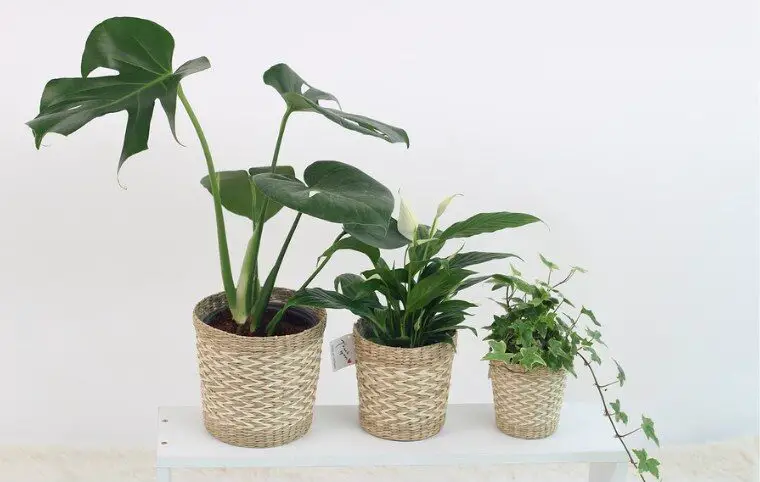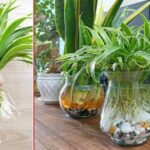Zamioculcas is an easy to grow plant and stands out for its beautiful decorative foliage. However, for it to look stunning, you need to take care of it properly. Find out what you need to provide and what mistakes to avoid during cultivation.
You will discover what to do when your zamioculcas turns yellow and how to encourage it to produce new leaves on the Doccoria portal.
Errors in cultivation Zamioculcas is a perennial plant that is becoming increasingly popular as an ornamental plant. It gained popularity in the late 20th and early 21st centuries. This tropical plant can reach a height of up to 1 meter.
It has thick, shiny, dark green leaves that can grow up to 10cm long, and fleshy stems that taper towards the top. Zamioculcas does not require much care and is a rather resistant plant. However, it is important to know some rules and avoid certain mistakes in caring for it.
The most important thing? Watering this ornamental plant should not be too frequent. The plant accumulates water in its leaves and is able to survive without it for up to 2-3 months. However, proper drainage is important. Therefore, it is advisable to put some gravel at the bottom of the pot.
Zamioculcas does not tolerate drafts or sudden changes in temperature. It is best to buy it in the warm months to prevent the leaves from falling due to contact with frost.
Zamioculcas should not be placed in very sunny places. It is best found in shade or partial shade and is also suitable for environments such as the bathroom thanks to its low light requirement. However, if you want the plant to grow lushly, it is advisable to also provide it with good natural light, as the lack of light hinders its growth. The leaves of the plant bend towards the light, so it is helpful to rotate the pot from time to time.
Older plants should be repotted every 2-3 years, while younger plants can be repotted into slightly larger pots each year.
The pot for zamioculcas should have large drainage holes. You should use fertile, free-draining soil, such as palm tree soil. The most common mistakes in cultivation include choosing a pot that is too large and deep, the lack of a drainage layer and insufficient fertilization.
What’s not to like about zamioculcas? First of all, remember that zamioculcas is an indoor plant, so it is not suitable for the garden. It cannot be placed on a balcony or terrace, as it is not frost resistant and after contact with frost the plant quickly dies. Temperatures below 5°C can damage the plant. Zamioculcas prefers a drier substrate than over-watering.
When the plant is dry, you will quickly notice this as its leaves will begin to shrivel. However, watering will restore their beauty. Overwatering can lead to rotting of the plant, which is an irreversible process, so it is best to pay attention to the drainage layer and use a pot with holes in the bottom so that excess water can drain away if necessary.
Why doesn’t zamioculcas produce new leaves? Improper care of the plant can affect its appearance. If your zamioculcas has curled leaves, is rotting or wilting, it means you have done something wrong. Even a slowdown in growth or yellowing of the leaves can be due to errors.
The cause of yellowing and stagnation can be excessive watering. It is best to water the plant when the substrate is slightly dry. Also avoid wetting the leaves with water to avoid ugly stains. If you have watered the zamioculcas excessively, it is advisable to transplant it into a new, fresh substrate.
Other causes of lack of new leaves may include: – Wrong season – Incorrect soil pH – Too little light – Pot too small – Insufficient watering
Using a nutritious fertilizer should help improve the condition of the plant and stimulate it to produce new leaves.
Lentil based fertilizer
Lentils are legumes considered a complete source of protein. They also contain many vitamins and minerals, so they are an important component of the diet, not only for vegans and vegetarians. It turned out that lentils can be used to prepare an effective fertilizer for zamioculcas. Homemade lentil fertilizer will stimulate plant growth and offer better protection against disease.
Procedure for preparing lentil fertilizer
It is not difficult at all and the fertilizer is ready quite quickly. Boil a liter of water and let it cool. When the water reaches room temperature, add 3 tablespoons of lentils. Leave them to soak and after 4 hours filter the liquid so that it separates from the lentils. Use this solution for watering and you can repeat fertilization once a month. The zamioculcas plant does not have high nutritional needs, but with regular fertilization it will grow better and look good, with dark green leaves.


